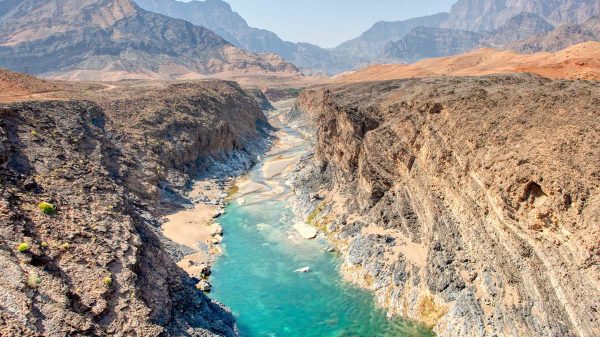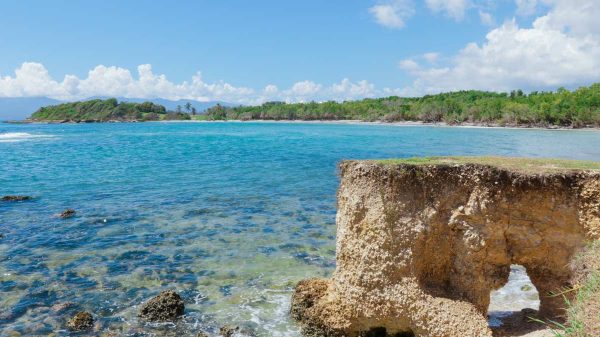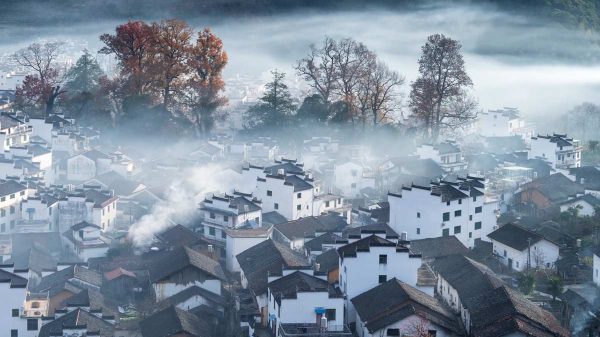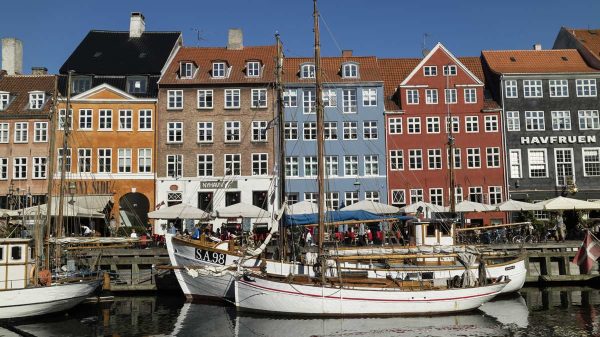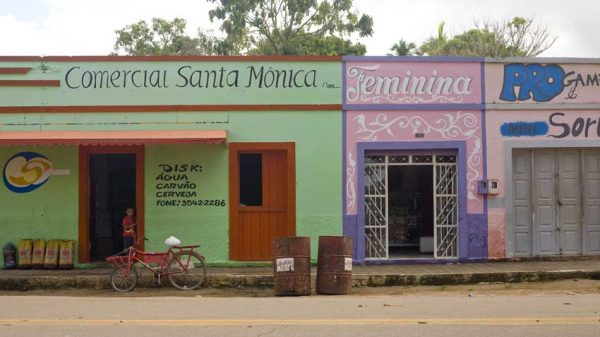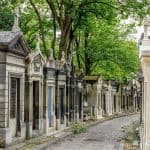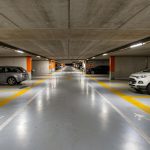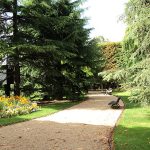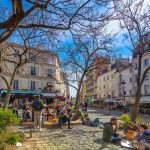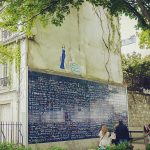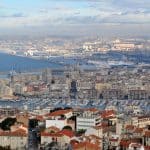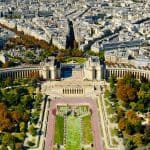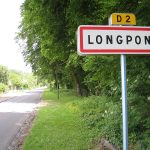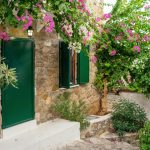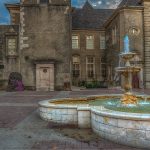Villes.Fr presents some of the most important monuments in Paris. This list is not exhaustive, nor does it claim to be unanimous. Indeed, visitors to Paris choose which monuments to see according to their priorities. Some people just want to take photos in the main squares, while others prefer to enter museums or see exhibitions in closed venues, and still others will spend more time in stores to shop or window-shop.
This makes it difficult to objectively classify monuments by number of visitors, and in particular those that can be visited free of charge or those that are best visited outdoors. Short-stay tourists can't get into all the monuments, so they sometimes just stop outside, walk around and take a few shots. Our ranking of famous monuments does not necessarily correspond to those most visited.
The Eiffel Tower undeniably in first place
340-meter-high metal tower built for the 1889 Universal Exhibition, to commemorate the centenary of the French Revolution. Certainly the most famous and most visited monument in France. The Eiffel Tower has three levels. Some people prefer to take the stairs up to the first level. The Eiffel Tower offers an exceptional view of Paris. The Eiffel Tower is most impressive when seen from the Place du Trocadéro, next to the Musée de l'Homme et de la Marine.
Access: Metro line 6 to Bir Hakeim station, line 9 to Trocadéro station.
Notre Dame de Paris Cathedral
Church built in the 9th century, located in the 4th arrondissement of Paris on the Ile de la Cité. This cathedral is world-famous for its beauty, size and history. It is said to have been the home of Quasimodo in Victor Hugo's novel Notre dame de Paris.
Read also: The construction of Notre Dame Cathedral in Paris
Access: metro line 4 Cité or Saint-Michel; metro line 1 or 11 Hôtel de ville; metro lines 7 and 14 Châtelet; metro line 10 Cluny or Maubert-Mutualité.
Arc de Triomphe and Avenue des Champs Élysées
At the very top of the Avenue des Champs Élysées is the Arc de Triomphe.
Most often referred to as the Arc de Triomphe, this monument was built on the orders of Napoleon Bonaparte, also known as Napoleon 1st. The Arc de Triomphe was erected to celebrate the victories of the French army. Emperor Napoleon Bonaparte wished to parade French soldiers under an arch for glory. Construction of the Arc de Triomphe began in 1808 and was completed in 1835.
See also: The Arc de Triomphe and the Champs-Élysées
Access: RER line A and metro line 1, line 2, line 6 Charles de Gaule étoile station for metro and RER.
Montmartre and the Sacré Coeur
The Basilique du Sacré Cœur in Montmartre is a famous religious building in Paris. The construction of this edifice was voted by law before the National Assembly in 1871. The Basilique du Sacré Coeur is the second most visited religious building in Paris, after Notre Dame de Paris.
Access: Butte Montmartre is situated on a mound. To get there, you need to take either a staircase, an elevator or the Montmartrobus. To take the Montmartrobus, take metro line 12 to Jules Joffrin station or metro line 12 to Lamarck Caulaincourt station or metro line 12 or line 2 to Pigalle station or metro line 12 to Abbesses station and then the Funiculaire.
The Butte Montmartre is a popular place to visit, especially for artists.
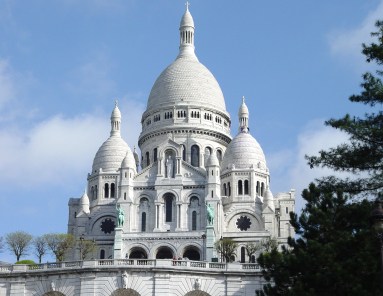
The Montmartre district is home to the Sacré Coeur cathedral. The Butte Montmartre district boasts the narrow streets and architectural style of old Paris, rustic art galleries where you can find little treasures by artists of varying renown, and well-known restaurants and bars frequented by local artists.
The Basilique du Sacré Coeur is the result of a late 19th century project led by two notable Parisians in the wake of political and religious events in France. The project was to build a basilica to wash away sins and obtain the grace of Jesus Christ. The project was approved by the National Assembly and recognized as a public utility. The foundation stone was laid in 1875, and construction was completed in 1914 and inaugurated in 1919 after the First World War.
The Basilique du Sacré Coeur receives several million pilgrims a year, making it one of France's most visited places of worship. Visitor numbers are expected to be second only to Notre Dame Cathedral in Paris.
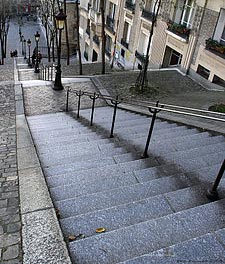
This living cultural richness is relayed through encounters with local residents in the cafés, bistros and small restaurants of Butte Montmartre.
The Château de Versailles
The Château of Louis XIV. The Château de Versailles is one of the most famous monuments in French history. The Château de Versailles has been home to some of France's greatest kings, including the famous Louis XIV, nicknamed the "Sun King". The Château de Versailles was built in the 17th century. The château is also a museum, containing works of art and evidence of the way of life during the period of royalty.
See also: The Château de Versailles, residence of the kings of France
Access: By RER line C to Versailles Rive Gauche Château de Versailles station, by train from Gare Saint-Lazare to Versailles rive droite station, or from Gare Montparnasse to Versailles Chantiers station.
The Palais des Invalides
Dedicated to disabled servicemen and major ceremonies. The Hôtel des Invalides is a monument built to house the army's invalids. It has two main themes: a museum dedicated to the nation's servicemen and women, and hospitals, accommodation and care centers for wounded soldiers and people with severe disabilities. The Hôtel des Invalides is also a research center for prosthetic limbs for the disabled and war-wounded.
Access RER line C and Metro line 13 and line 8 Invalides station
The Royal Palace
Home to the kings of France. The Palais Royal is a palace where several kings of France lived, most notably King Louis XIV during his childhood. Today, the Palais Royal is much-visited for its rooms and antique decor, as well as for its garden and exhibitions. Opposite the Louvre Museum, the Palais Royal is part of an architectural ensemble that blends seamlessly into the Louvre district.
Access: Metro lines 1 and 7 to Palais Royal and Musée du Louvre,
Paris City Hall
Paris City Hall. Home to the mayor of Paris. Paris City Hall is a beautiful monument located in the 1st arrondissement in the district known as Hôtel de Ville. Visits to Paris City Hall are organized every week, and twice a week in summer. To visit Paris City Hall, it's best to register in advance, as the average waiting time is two months.
Access: Metro line 1, Hôtel de ville station
La Tour Saint-Jaques
Close to the Halles district, the great Tour Saint-Jaques. The Tour Saint-Jaques looks like an isolated tower and stands in the middle of a square in the 4th arrondissement of Paris. The Tour Saint-Jaques is the remnant of the church of Saint-Jaques-de-la-boucherie, which was sold stone by stone after the French Revolution as national property.
Access: Metro lines 1, 4, 7, 11 and 14 Châtelet station, Line 1 Hôtel de ville station
The great monuments of Paris will make you want to understand the great history of the city of Paris.
